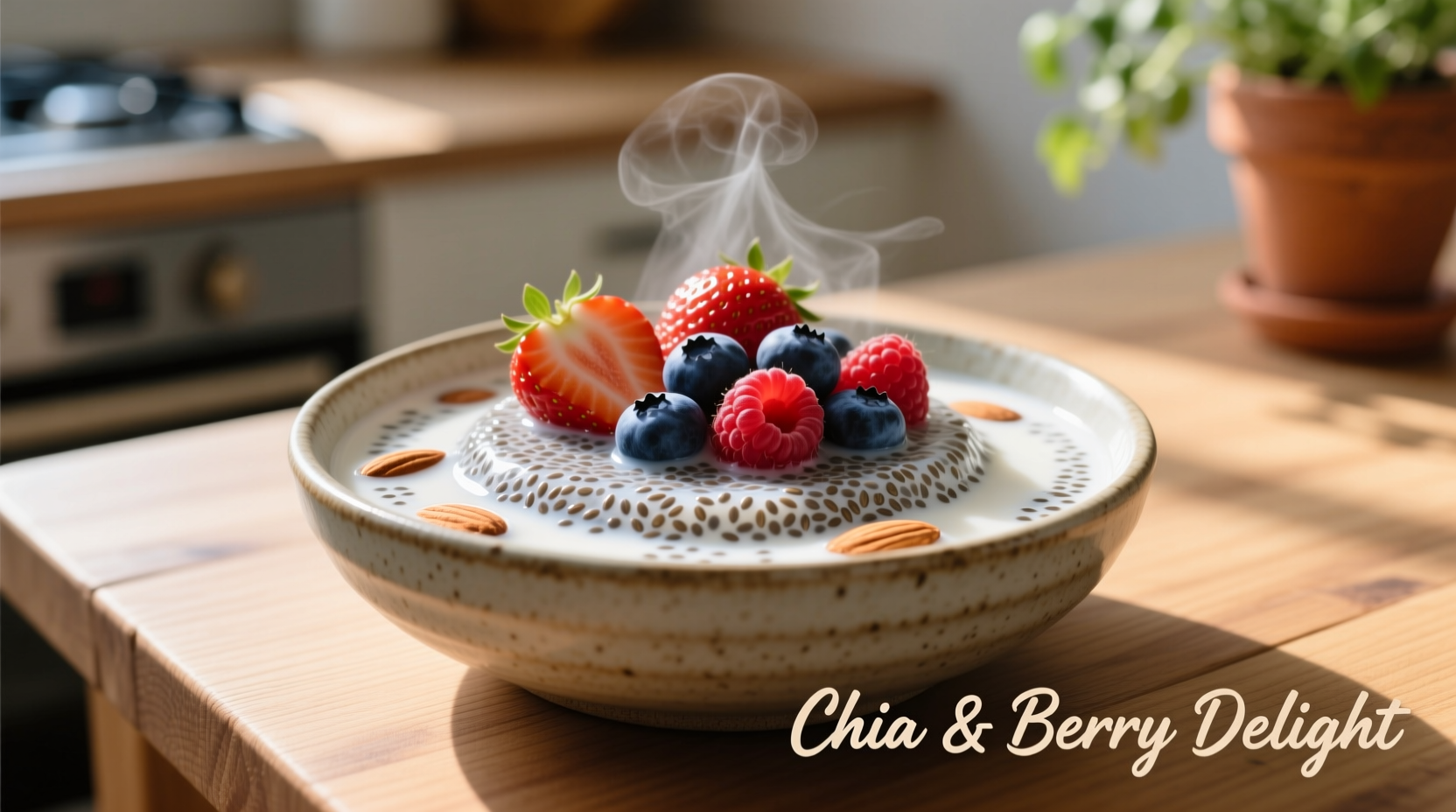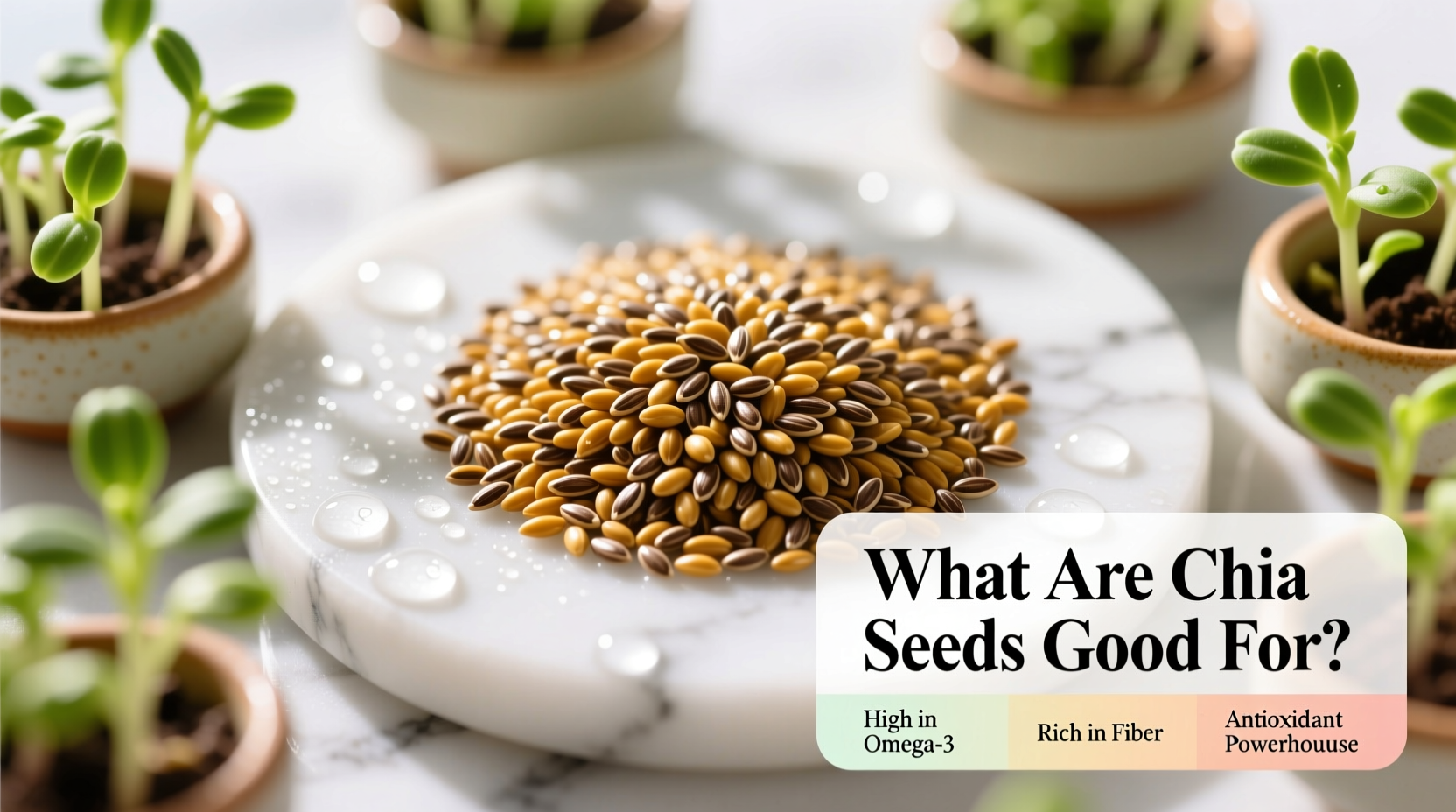Chia Seeds Benefits: Top 5 Science-Backed Health Advantages
Chia seeds are exceptionally good for heart health, digestion, blood sugar control, weight management, and bone strength. Just one ounce (28g) delivers 11g fiber, 4.4g plant-based omega-3s, and 18% daily calcium - making them a nutritional powerhouse for overall wellness. These ancient superfoods provide sustained energy while supporting metabolic health through their unique soluble fiber and antioxidant profile.

From Ancient Staple to Modern Superfood: The Chia Timeline
Chia seeds have fueled human performance for millennia. Aztec warriors consumed them as energy-dense rations during long marches, while Mayan runners relied on "chia" (meaning strength) for endurance. After nearly disappearing post-Spanish conquest, modern research revived their prominence. The USDA's 2009 recognition of chia's nutritional profile triggered global adoption, with consumption increasing 300% between 2010-2020 according to USDA FoodData Central.
Nutritional Powerhouse: Chia vs. Other Seeds
| Nutrient (per 1oz) | Chia Seeds | Flax Seeds | Hemp Seeds |
|---|---|---|---|
| Fiber | 11g | 8g | 1.2g |
| Omega-3s | 4,915mg | 6,388mg | 8,000mg |
| Calcium | 18% DV | 16% DV | 12% DV |
| Antioxidants | High | Moderate | Low |
Data sourced from USDA National Nutrient Database. Note chia's superior fiber content and antioxidant capacity compared to alternatives.
Your Top 5 Evidence-Based Health Benefits
1. Heart Health Protection Through Multiple Pathways
Chia seeds combat cardiovascular disease through three mechanisms: soluble fiber binds cholesterol for elimination, omega-3s reduce inflammation, and quercetin antioxidants improve blood vessel function. A 2017 meta-analysis in Nutrition Reviews found regular chia consumption lowered systolic blood pressure by 2.5 mmHg and triglycerides by 13.3 mg/dL in clinical trials.
2. Digestive Wellness via Dual Fiber Action
The unique 3:1 soluble-to-insoluble fiber ratio creates dual benefits: soluble fiber forms a gel that slows digestion (promoting fullness), while insoluble fiber adds bulk for regularity. Unlike flax, chia's fiber remains effective without grinding. Research in European Journal of Clinical Nutrition shows chia's gel-forming capacity improves stool moisture and transit time within 24 hours of consumption.
3. Blood Sugar Stabilization for Metabolic Health
Chia's soluble fiber gel slows carbohydrate breakdown, preventing post-meal glucose spikes. In a University of Toronto clinical trial, type 2 diabetics consuming chia daily showed 11% lower postprandial glucose and improved insulin sensitivity versus control groups. This makes chia particularly valuable for prediabetes management.
4. Sustainable Weight Management Support
Chia's 12g fiber per ounce promotes satiety through gastric distension and ghrelin suppression. The gel-forming property expands in stomach fluids, creating physical fullness cues. A Journal of Food Science study demonstrated chia consumers ate 25% fewer calories at subsequent meals versus matched controls, with effects lasting 3-4 hours.
5. Bone Density Preservation Through Mineral Synergy
Chia delivers bone-building nutrients in ideal ratios: 18% daily calcium, 30% phosphorus, and 27% magnesium per ounce. Unlike dairy, these minerals absorb efficiently due to chia's low phytate content. Research from Harvard T.H. Chan School of Public Health confirms chia's mineral profile supports osteoblast activity better than isolated calcium supplements.
Practical Incorporation Guide: Maximizing Benefits
For immediate digestion support: Mix 1 tbsp chia with 3 tbsp water, wait 15 minutes to form gel, then add to smoothies. This pre-hydration prevents intestinal blockage.
For sustained energy: Create chia pudding with unsweetened almond milk (1:4 ratio) refrigerated overnight. Top with berries for antioxidant synergy.
For baking: Replace eggs with 1 tbsp chia + 2.5 tbsp water per egg. Ideal for muffins and breads where moisture retention matters.
Important Usage Boundaries: When to Exercise Caution
While generally safe, chia seeds require context-aware consumption:
- Swallowing difficulties: Never consume dry chia seeds - they expand 12x in liquid. Always pre-soak if you have dysphagia (per FDA safety guidelines)
- Blood thinners: Consult your physician if taking anticoagulants due to omega-3 content (may increase bleeding risk)
- IBS flare-ups: Limit to 1 tbsp daily during active symptoms - high fiber may exacerbate discomfort
Start with 1 tsp daily, gradually increasing to 2 tbsp over 2 weeks to allow gut adaptation. Adequate water intake (minimum 8 glasses daily) is essential when consuming chia.
Frequently Asked Questions
Can chia seeds help lower cholesterol naturally?
Yes, multiple studies confirm chia seeds reduce LDL cholesterol. The soluble fiber binds bile acids (made from cholesterol) for elimination, forcing the liver to use circulating cholesterol to produce more bile. Clinical trials show 10-15% LDL reduction with daily 30g consumption over 12 weeks.
How do chia seeds compare to flaxseeds for omega-3 benefits?
Chia provides more stable omega-3s than flax. Flax's ALA oxidizes quickly when ground, while chia's natural antioxidants preserve its omega-3 content for months. Chia also offers higher fiber content and doesn't require grinding for nutrient absorption, making it more convenient for daily use.
Are there any side effects from eating too many chia seeds?
Excessive consumption (over 4 tbsp daily) may cause bloating, gas, or constipation due to rapid fiber increase. In rare cases, dry chia seeds can expand in the esophagus causing blockage. Always consume pre-soaked and with adequate fluids. Stick to 1-2 tbsp daily for most adults.
Do chia seeds need refrigeration after opening?
While not mandatory, refrigeration extends freshness. Chia's high antioxidant content prevents rancidity better than other seeds, but storing in an airtight container in the fridge preserves omega-3 potency for up to 2 years. Pantry storage remains viable for 6-12 months in cool, dark conditions.











 浙公网安备
33010002000092号
浙公网安备
33010002000092号 浙B2-20120091-4
浙B2-20120091-4